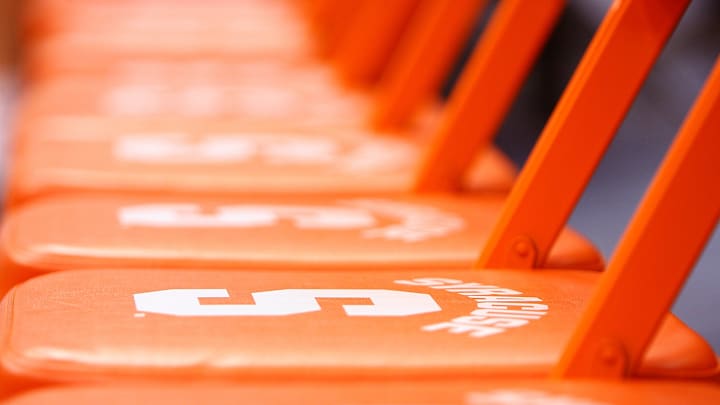For Syracuse basketball and its peers around the country, they could start to recruit prospects who have competed professionally, as the line blurs between pro and amateur athletes.
Quite simply, I despise this. But then again, college sports as we once knew them are no more. Crazy conference realignment. The transfer portal's explosion. Name, image and likeness deals. Direct revenue-sharing. And former professionals getting to play in college.
I'm so not a fan of the last item listed above, but we're likely to see more and more of it, experts say. In recent weeks, a couple of former NBA G League players have committed to play in college, including one guy who is headed to fellow Atlantic Coast Conference school Louisville.
College basketball needs a commissioner or a leadership structure that can make decisions on all of these agenda items and more. It might even take a “summit” with the @NBA and @FIBA.
— Fran Fraschilla (@franfraschilla) October 28, 2025
1. JUCO to NCAA eligibility
2. International pro to NCAA eligibility
3. Multiple transfer…
But how can this happen, one might ask? Well, it all stems from college athletes earning income from third-party NIL and now direct payments from their schools, the result of the multi-billion-dollar House settlement getting approved over the summer.
Syracuse basketball and other programs may look to recruit former pros.
Historically, the NCAA has defined pro versus amateur in the sense that a professional is making money and earning a salary, so to speak, for his or her sporting endeavors. However, given NIL and revenue-sharing, college athletes are getting paid, too. What, then, becomes the difference between a G League player and a guy who is playing in college?
The line has blurred, even though college coaches, some of them Hall of Fame head coaches, don't like it. As On3 noted last month, "G-League players could be deemed eligible for college basketball if they’re still within five years of their high school graduation. The main factor that jeopardizes eligibility is if they’ve gone through the NBA Draft process or previously signed an NBA contract."
Experts say G-League players, and also those who have played professionally abroad, will look to suit up in college. Last month, college head coaches blasted this potential trend, including Michigan State's Tom Izzo.
NCAA memo to members on eligibility. Comes in the wake of college basketball’s reaction to G-League players committing to schools. pic.twitter.com/ns9ITDyMsU
— Pete Nakos (@PeteNakos_) October 24, 2025
In response, the NCAA issued a memo that read in part, "More schools are recruiting and enrolling individuals who have competed professionally – including many with experience in international and domestic leagues who may find college sports more appealing given the financial benefits now available. ... NCAA rules do allow players who competed professionally prior to collegiate enrollment to retain eligibility for college sports, though in some cases, players may lose seasons of eligibility due to delayed enrollment."
Just like I had to get used to Syracuse being in the Atlantic Coast Conference, instead of the Big East, I'll get used to former pro players competing in college. Sort of. My biggest grip here centers on what this does to high school recruiting.
As it is, when the NCAA allowed college players to transfer without having to sit out a year, beginning a few seasons ago, that started to result in college coaches shifting more of their recruiting focus to the portal as opposed to the prep level.
Now, if college coaches are also looking at former pro players along with college transfers, that will probably put even less emphasis on high school recruiting, save for the top prep prospects.
"To me, it's ridiculous. To me, it's embarrassing."
— Ben Shockley (@BenShockley_) October 22, 2025
Tom Izzo's thoughts on Louisville signing a player with multiple years of G League experience.
Question via @chrissolari @wilxTV https://t.co/0ywBGQKouE pic.twitter.com/rLIOpeCjdF
As Izzo said in part, "This just goes to show you how ridiculous people that are in power make decisions. ... And I’m going to get killed because someone’s going to say, 'Well, if they go pro, it doesn’t work out. Shouldn’t they be able to come back?' Well, what about the freshmen you recruited there? That’s somebody’s son, and he thinks he’s got himself a good place. And all of a sudden, shazam. They pull out of their hat and bring a 21 or 22 year old in."
Well said, Tom. Well said.
